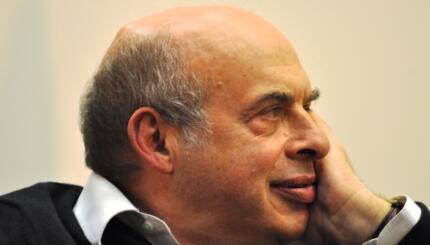We use the phrase “transplants” often down here—referring to the “Yankees” who for one reason or another found themselves down South. (Transplants like… me.)
Me with Joel May, Kevin Kirby, Cantor Coleman Reaboi standing beneath the ner tamid.
In the Southern Jewish communities with which I interact, the transplants are often people who, though lacking “deep Southern roots,” have stepped up as local leaders. They step up alongside those with the deep Southern roots, the ones who have been leaders in their communities for multiple generations. Both the transplants and the long-term residents share an appreciation of and dedication to Jewish communal life—but for the transplants, this passion is often newfound. Even if they weren’t as active “Up North,” they end up serving as leaders in their Southern congregation, and ambassadors in their communities.
When I traveled as an Education Fellow, I would hear from moms and dads in small Southern towns who “never in a million years” thought they would be teaching religious school. In New York, New Jersey, California, places with large Jewish populations, there were plenty of people to do all the things that maintain a healthy and thriving congregation. In smaller communities, it’s more do-it-yourself.
So, what was I doing in Tarpon Springs? It began with a phone call from Joel May, a transplant to Tarpon Springs. But he wasn’t the typical “snowbird” retiree most of us picture when we imagine transplant Jews moving to Florida. Joel is originally from Jasper, Alabama. And while he has lived in many places since, he was a born and bred Southern Jew. He contacted me about a loan of an eternal light for their sanctuary, a process we affectionately call “re-planting”. Being from the region, Joel knew of our museum. He made the connection, and I worked with him and his committee to re-plant a beautiful
ner tamid
from Gemiluth Chassed, a congregation that had closed in Port Gibson, Mississippi, to his congregation in Florida.
For me, the experience of replanting a Southern Jewish artifact rich in value and history (the ner tamid was originally donated to Gemiluth Chassed, the oldest synagogue in Mississippi, built in 1892) was already incredible. Making it even more meaningful was the Southern Jewish congregant, Joel from Jasper, helping to bring this artifact to his new community. His new a community is one full of transplants, from many places outside the South, but all are now connected to the Southern Jewish experience. It is a remarkable testament to the contribution and quality of the small population of Southern Jewish communities.
My time in Tarpon Springs was lovely. Years ago, I was lucky to drop into communities every other weekend, but I had forgotten what a joyful feeling it is to be warmly welcomed into a new group of people. Food, music, gossip, what could be better! What I soon learned is that while the community was made up of transplants, they weren’t the typical New York Jews I was expecting. All the jokes I had written into my talk about Brooklyn were going to fall flat with the people I was meeting from Michigan, Illinois, and Minnesota. (Apparently the west coast of Florida attracts Midwesterners—who knew?!) I admit I felt foolish for coming with preconceived assumptions, when most of what I do each day is try to break down stereotypes of Southern communities.
But I was pleasantly surprised that many of the people in the congregation would find it easier to connect to small town congregational life like Port Gibson. I heard from people telling me about their families immigrating to the Midwest, opening stores or becoming fur traders, very similar narratives of the Southern story that I was planning to share. I listened and learned about the natural connections between Midwest and Southern congregations that I hadn’t previously considered before my visit. This made this replanting all the more special.
The night of the dedication, I met a few people who had come because they did have Southern roots. A woman from Atlanta, a family from Brookhaven, Mississippi, a couple from New Orleans. I liked seeing them seated in the congregation, nodding along with my new Midwestern-ex-pat friends as I talked about the connection between the long and rich history of Jewish communities in the Deep South to the larger national Jewish population. Dedicating a piece of the Gemiluth Chassed sanctuary built a special connection through time and space between these two small congregations, a connection that is important for continuing to support the legacy of Jewish communities in the region.
This eternal light, the ner tamid, will be given the opportunity to shine again and serve a congregation, ensuring the ancestors of small town Jewish communities like Port Gibson will not be forgotten… well, I get goosebumps just thinking about it! I am grateful to have had the opportunity to be a part of this wonderful celebration.
Like this post?
Join the conversation through MyJewishLearning’s weekly blogs newsletter
.



